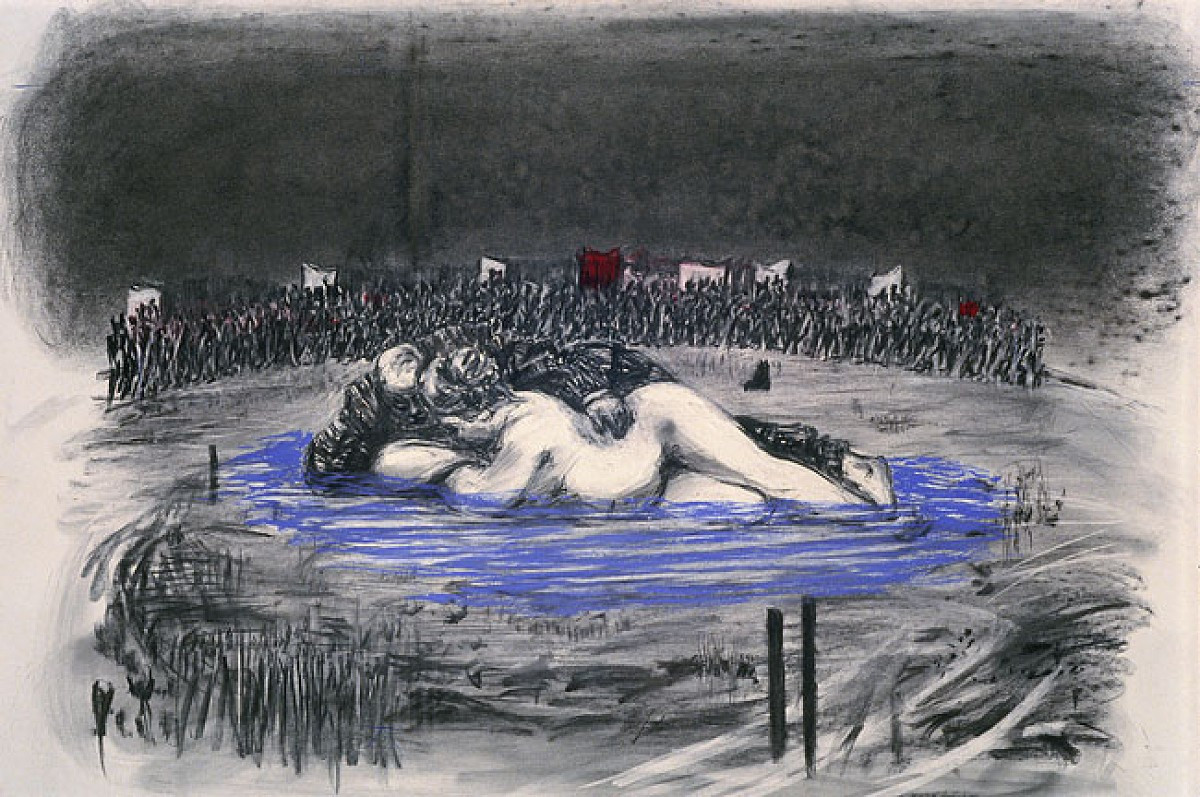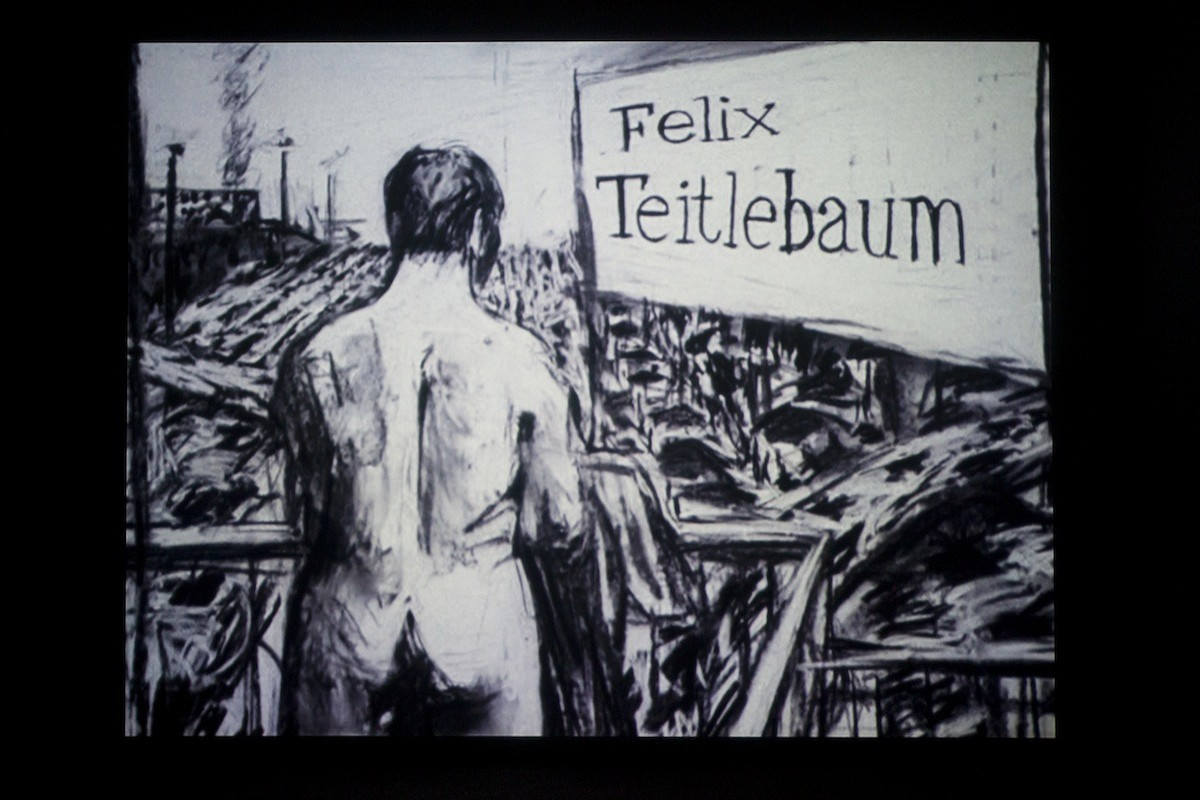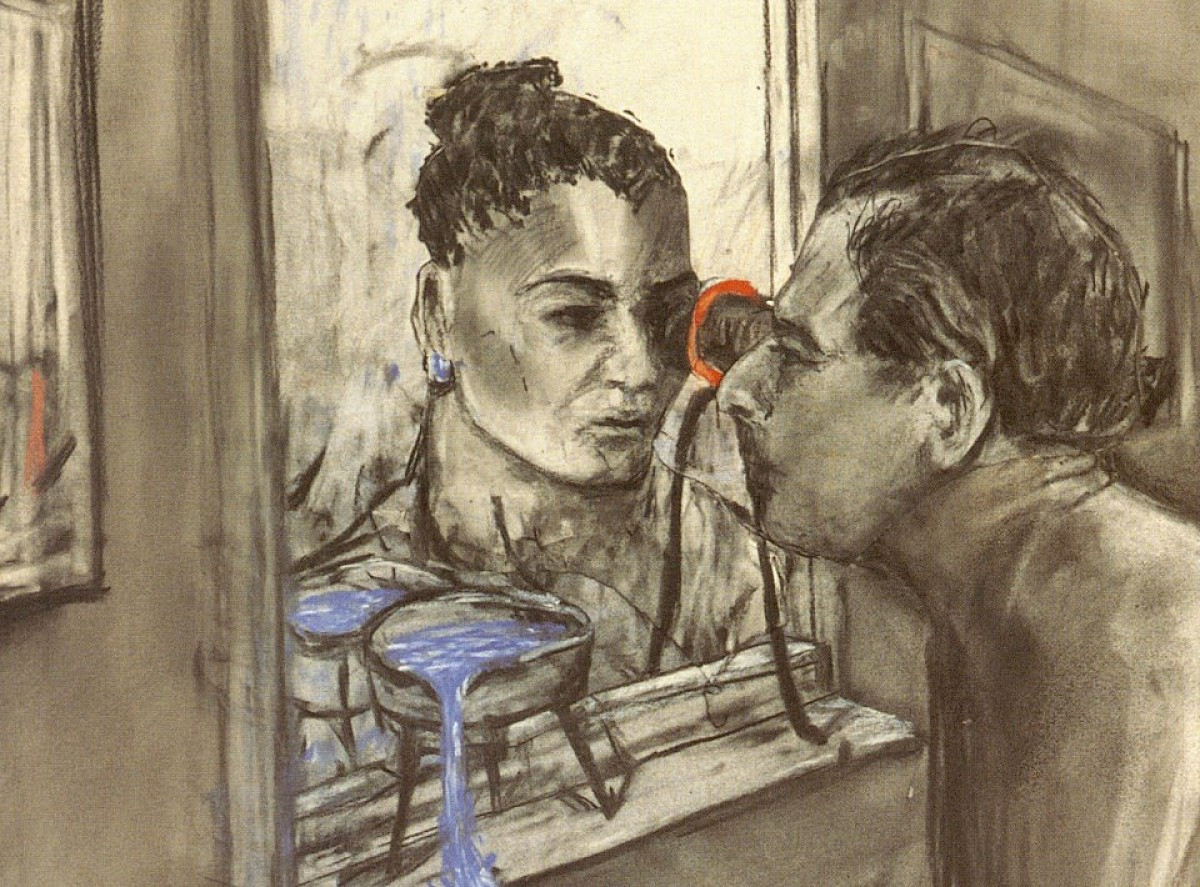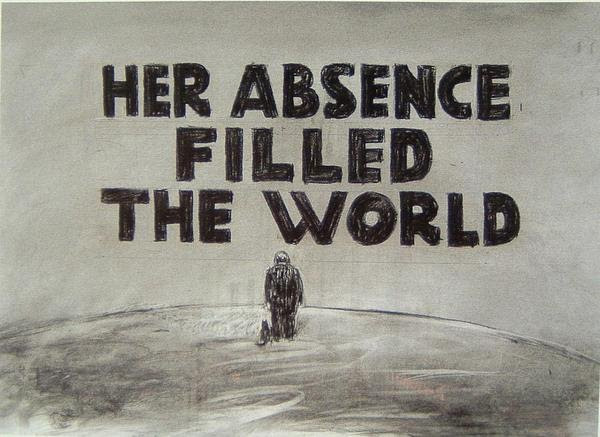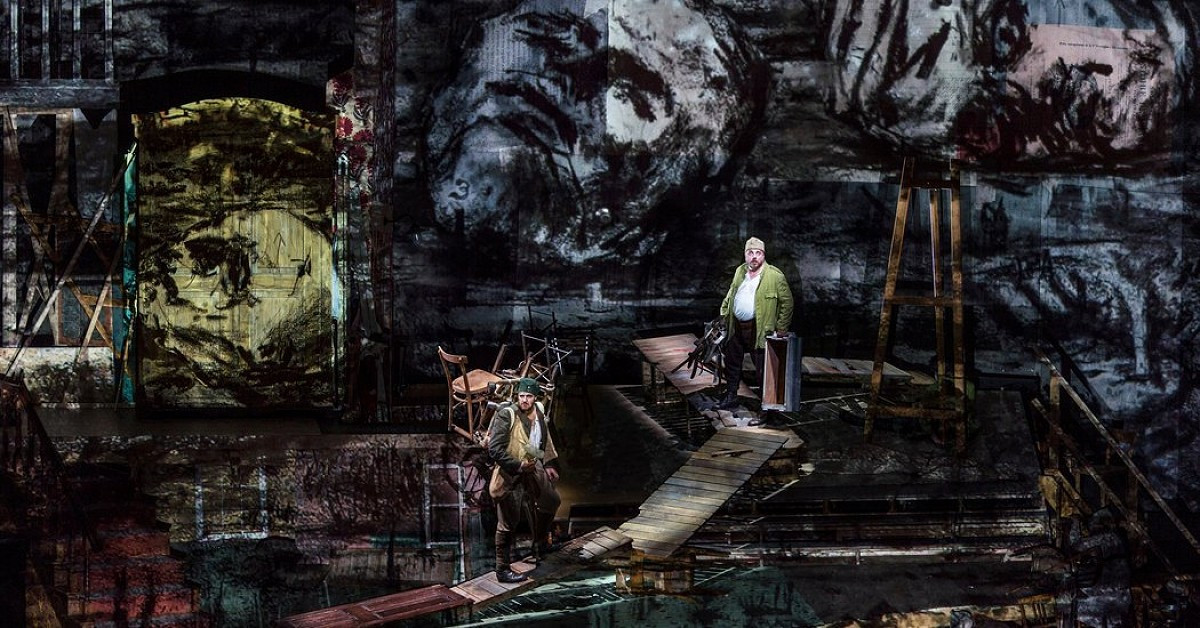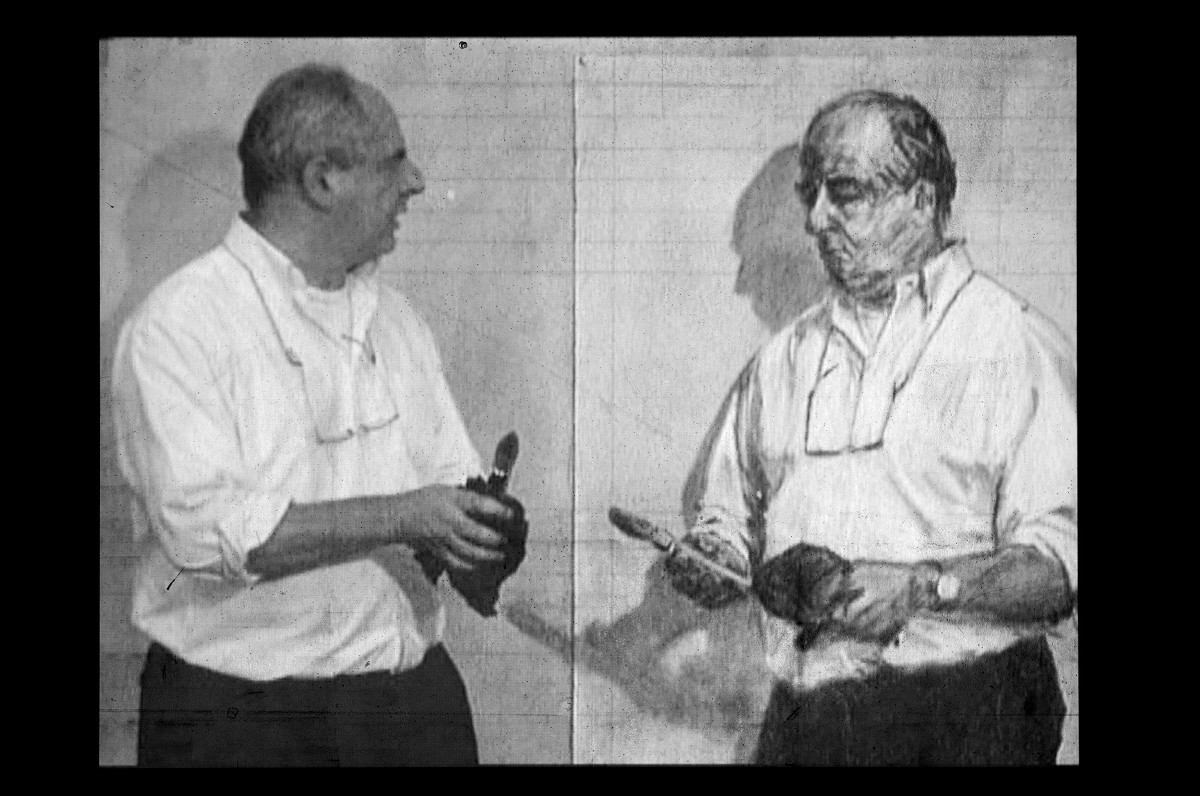William Kentridge
Published: September, 2017, ZOO MAGAZINE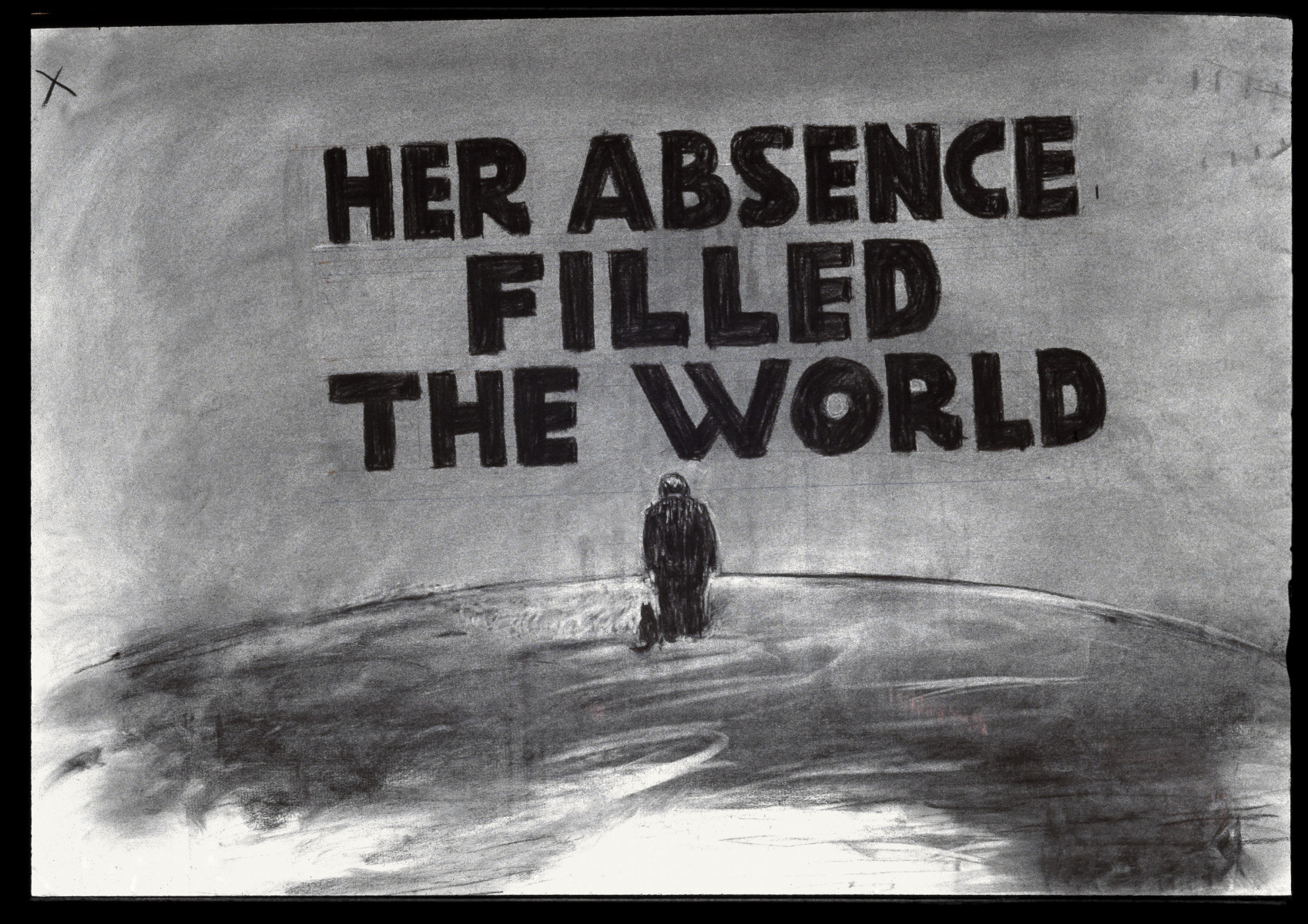
Marta Gnyp: You were born into a celebrated family of lawyers who were fighting against apartheid in South Africa. Has this helped or obstructed your development as an artist?
William Kentridge: Coming from a family of lawyers brought to my attention, at a very young age, the unnatural nature of Johannesburg’s society — particularly its illogical structure, its evil and its injustice. This was important for developing an understanding of myself, as someone born outside of the norms of the white middle-class society that I was learning about in school. In a more fundamental way, with my parents around me — both strong lawyers with incredible legal skills — I was pressed to find a field that was alien or impervious to the law and legal forms of reasoning. I was interested in meaning and broader ethical questions about society, but I needed to approach those issues from a different vantage point than the logical
method associated with legal reasoning.
MG: How did you translate this alternative logic into your artistic work?
WK: Making drawings with inherent ambiguity, or making animated films — in which so much is left unspecified and left for the viewer to complete — is a way of escaping the constrains of the legal world. At the same time, the work is connected to a desire to be closer to the broader goals of South Africa during the times of apartheid and its opposition.
MG: Have your personal experiences during the apartheid affected your work?
WK: I think it would be very difficult to grow up in South Africa during the heyday of apartheid. In the heyday of the anti-apartheid movement, lots of us understood that the courtroom we were living in was a very rich subject to work with as an artist. But it was also a painful place to live in during that time. Obviously, it was much less painful for a privileged white South African middle class man than it was for someone on the other end of the spectrum, suffering under the immediate oppression of the network of laws know as apartheid.
MG: How did you find your own artistic language?
WK: When I started making art, I thought about it linearly — I thought that in order to know what needed to be done, I just had to think about the images that the world needed. What did the trade union movement or the proletariat need to see to make its revolution? After a while I realized that the work I was making from this perspective was very inauthentic, because I was thinking on behalf of other people, imaging what they might want. On top of that, I had no idea what they wanted or what was needed, so I had to begin in a completely different way, working with images and material that interested me in the hopes that other people would also find a connection to it.
MG: Which work did you make with this new recipe?
WK: I made the animated film, Johannesburg: 2nd Greatest City after Paris, which wasn’t meant to be seen. I worked with the editor who was also the interlocutor needed for making it. I was astonished when the film was shown at some film festivals, and when somebody asked me to show it at an exhibition, I was insulted. I thought, ‘That’s a film — you can’t show a film in an art exhibition! Why don’t they just show my drawings?’ I thought it was ridiculous when it was shown in a museum. I had to be dragged off kicking and screaming to understand what it was that I had made. So, I certainly mistrust any broad anticipations of how something will work, or who will respond to certain work in a particular way.
MG: Johannesburg: 2nd Greatest City after Paris is actually a cliché story. The rich businessman, Soho Eckstein, is a bad character, and his wife is cheating on him with her romantic and sensible lover, Felix Titelbaum. It is your masterly approach the medium of drawing, sound and animation that makes the film into a masterpiece. Do you choose which artistic medium to work with depending on what you want to say?
WK: Thank you. No, I think the medium chooses me, or I choose the medium and the meaning comes after that. When I create an opera, there has to be a convergence somewhere between the medium or material — ink, charcoal, paper cutouts or transparent projections, for example — and the theme of the opera. This usually means that I have to start with a medium to discover what the thematic form of the opera might be. The fragmented drawings that I used in Lulu led me to understand that this opera is about the fragility of the object of desire. Every object of desire shatters and refuses the position its observer wishes it might have. Lulu was never the woman that men wanted her to be, and the men were never the people that Lulu needed them to be. So, I don’t choose a medium depending on what I want to say. Rather, I discover what I want to say through the medium.
MG: You have been using a variety of mediums: drawings, sculptures, tapestries, prints, films, theater and opera, to name a few. Are you bored with limitations?
WK: I’m not. In the migration of images from one form to another, and in the demands of the different forms that are outside of the norms of a particular medium, new images emerge that would not have emerged in a less haphazard context. Art at the service of the opera has produced drawings that are more interesting than drawings I would make on their own, if I were only thinking about drawings.
MG: Stories are very important in your work.
WK: It would have been impossible for me to maintain distance from the political, in the way that artists in Europe or North America had after the war, when they were sick and tired of disruption and change, entering into a formal language of conceptualism and abstraction. It was never possible for me to embrace the Greenbergian idea of thinking about surfaces and edges as a high point of artistic creation, which was a norm at art schools when I was a student in the ‘70s and the early ‘80s.
MG: Your thinking about art concentrates on the process of making and the studio. Are you fed up with art theory which is often overloaded with redundant philosophical messages?
WK: To keep up with that requires a full time occupation in reading critical theories and contemporary art criticisms, and I’m just behind on that. I stopped strict critical reading in a serious way when I left university. Now I do it very sporadically, and I prefer to see what the experience in the studio can teach us about broader questions, rather than trying to be a good critical reader of theories I only half understand.
MG: If I think about the way you present the human being in your work, a few terms cross my mind: comedy of existence, absurdity, projections and illusions.
WK: I’m interested in these categories as a kind of naturalism, or as an accurate and immediate description of the world. To try and take the absurd out of this is to enact violence against what is actually happening. By the absurd, I don’t mean the joke or the foolish components — mean the dislocation of logic. The dislocation of logic in apartheid is the antithesis to faulty logic, which gets carried to its last stage of completion.
MG: Is there any role that art can play to make life meaningful?
WK: I’m not sure art can make life meaningful, but it can show the ways in which we make meaning in life. So many techniques that are natural in the studio — such as collage, fragmentation or reconstruction — are constructing the world according to the fragments that one has laying around them. I would suggest that what the studio shows is a model for how we — out of necessity — operate in the world. Art shows that we don’t simply perceive the world as passive receptors, but that we are constantly in a process of constructing the meaning of the world around us, as well as constructing our social selves.
MG: If I bring up one of the tools you often use — erasure — what kind of constructions does it bring to mind for you?
WK: Erasure is one of the techniques that I use that carries certain implicit meanings. Specifically, an imperfect erasure — if we are talking about charcoal drawing and the fibers of the paper — forces you to experience the passage of time, almost making time thick. It makes the idea of time and its process of transformation palpable.
MG: Were you aware of this quality when you started using erasure?
WK: I discovered it by returning to the technique again and again, and also because it revealed part of the world that is very close to me. Whether it is close to me because of the technique, or whether the technique has led me to something that was boiling within me, is hard to say. There is obviously a difference between people who have certainty — for whom the world can exist as a series of facts — and people who have uncertainty, in which case the world exists almost provisionally. I could draw a table and the table could simply be a table, or I could draw a table that is in interim states between the forest, the tree, the timber, the table, the fire, the smoke and its ashes.
MG: Do you find that images have a new meaning because of their omnipresence, brought about by new technical possibilities?
WK: Sure, in the age of technical reproduction we are bombarded with images, which changes how we read them. Nonetheless, before the start of that moment, we have always had to construct our lives from an overabundance of fragments and details. This doesn’t always translate to seeing 400 pictures of the war in Syria in one day. Nonetheless, I had a dream last night where I was fighting with my brother — did I start the day with that rage? Or did I say no and hold my tongue, trying to manifest a different emotion within myself? I can’t imagine that those kinds of questions and options were once never there.
MG: So, what is the impact of the overabundance of images?
WK: Their overload is simply a way of magnifying the question and making it more evident, but not fundamentally changing it. There are certain images that lose their impact because of their ubiquity. It’s hard to see archival images in the same way we would have looked at them 40 years ago. When you are looking for Italian gas masks or wounded people in World War I, there are 4000 images that confront you on the Internet, rather than the shock of finding one or two in a book you’re looking through at the library.
MG: Enlightenment is an important subject in your art. Are you somehow longing for the possibility of an enlightened world?
WK: The benefits of the Enlightenment are becoming more and more fragile. Things that were once taken for granted in the liberal democracies of Europe and North America are extremely fragile, and can be undone in a matter of weeks or hours. The promises or possibilities of the Enlightenment seem to be a dream. But on the other hand, we’re completely aware of the implications of the Enlightenment in the colonial takeovers, and all the horrors that were unleashed during that time.
MG: We are stuck in the Enlightenment project because there is no other option.
WK: All projects that see themselves as acting on behalf of others bring on catastrophes, whether they are trying to beat people into happiness in the Soviet Union, or pursuing undue industrialization to find the purity of peasant life in Cambodia, or
enacting the American way of life in Vietnam. We understand that these projects have a kind of Enlightenment impulse behind them, and they end in disaster because of their perceived certainty. I’m aware of the contradictions and paradoxes of the Enlightenment, but certainty is the only hope we have.
MG: What can art do to remedy the toxic political situations in today’s world?
WK: I think that in its nature — in its deepest structure rather than in its immediate subject matter — it can show the instability of facts and of moments, while also revealing the instability of all statements of authority and certainty. There is obviously a connection between certainty, violence and authority.
MG: So, art as opposed to the fixed and authoritarian?
WK: I think that art does celebrate a movement, an ambiguity and a disavowal of all that is certain. It allows space for the biography of the viewer to be part of the forces that shape the meaning of the work. Statements of authority take that biography out, but we know from every image we look at that it’s always a mixture of what the world brings to you and what we project onto it. The only way we make sense of the world is through this mixture of reception and projection, and projection is always inflected by the particular biography of the viewer.
MG: Why are you so fascinated by the opera?
WK: When the opera house is looking for new voices and new ways of seeing the opera, you can think of an artist working in an opera as a director or designer. But you can also see it in a completely other way: the opera is offering the artist fantastic, enormous canvasses — the proscenium, 17 meters wide, 10 meters high — as a space for projection, where 40 or 100 performers will do what you instruct, making drawings with their bodies. And not only that — they have the most remarkable voices to sing with. They’ll throw in an orchestra of 120 musicians. It is an extraordinarily rich way of working with material, resulting in the creation of a 4D drawing, whose edges are shaped by the libretto and music.
MG: In addition to directing Lulu, you recently directed Wozzeck by Alban Berg. How do you choose the operas you want to be involved with?
WK: So many people said that Lulu is one of the greatest operas of the 20th century, and I thought to discover this while spending years making it. It certainly is one of the masterpieces of the 20th century, but having completed it, experiencing
the pleasure, joy and intimacy of the Wozzeck was a revelation for me.
MG: How important is music to our understanding of images?
WK: It’s not that you need music to understand them, but listening changes how you look at them, which changes what you hear.
MG: You seem to like the multiple perspectives that vision provides. Why is this so important to you?
WK: Consider stereoscopy as an example: one can’t help but sense a depth of space when looking at a stereoscopic view, but in reality they are two flat photographs, combined in our brains to give the illusion of depth. The same happens when we perceive the world around us. Each retina receives a flat image, and our brain combines these images to give ourselves a sense of depth through which we navigate the world. There’s a sense of complicity that affects how we look at the world. The devices we use — whether they are orphic mirrors, stereoscopic objects or virtual reality headsets — are about agency and making sense of the world. This quality, as much as the pleasure of working with those particular materials, is what makes them so important.
MG: What makes an image powerful? I experienced a sense of power when looking at your drawing Her Absence Filled the World.
WK: I don’t know. Absence is a work with an empty landscape with words written in block letters above it. Interestingly, it was shown in several commercial exhibitions, but nobody was interested in buying it, so it stayed in my own collection by default — and now I’m very pleased to have it. There are a lot of people who do respond to the image. I think it’s because it floats halfway between reading and looking — you read the text, but it’s connected to the simplicity of the horizon and landscape in the drawings. What makes an image powerful is the mixture of what comes to you from the drawing and what you project onto it. When these meet, it’s as though they are saying, ‘Here’s something coming from outside of me, but it seems to correspond with and understand something inside of me as well.’ That’s the consolation of art — showing a connection with other people within ourselves.
MG: The contemporary discourse of African art is dominated by post-colonial rethoric. How can the African art of today escape being seen as solely post-colonial?
WK: When we are talking about art from one continent with such different histories and trajectories, the idea that it should be unified under one simple umbrella category or geographical location is ridiculous. In any exhibition of African art, usually a third to half of the artists shown are not artists who are living in Africa at all, but are individuals who used to live there, or whose ancestors used to live there. The diaspora has always dominated Africa. The first Ptolemaic maps were made by explorers from outside the continent, and slave raiders are who actually defined the outside parameters. The notion of Pan-Africanism came from America. This external image of the continent has been colored by different histories, but the colonial past has been extremley pervasive and important for almost all the countries of the contintent.
MG: What is your relationship to black South African artists? Some of them consider you to be from a different planet, since your set of cultural references is not their own.
WK: Some of them might see me as coming from a different planet, but there are others who feel camaraderie in what it means to be an artist. If identity politics becomes the language of the discourse for artists from Africa, then of course it
is a strange situation for me to be an African artist with a cultural heritage that comes from Eastern Europe, rather than from many generations of living in Africa.
MG: What do you mean by the ‘camaraderie’?
WK: I was at a conference in Kenya for artists from Africa, and the theme was ‘blackness’, which I felt comfortable about — but I also felt a bit on edge. I was interested what people’s feelings were about it. At the end of the day, many artists came up to me and said that in the studio, ‘blackness’ is not a subject they are thinking about. They live in Zambia or they live in Kenya, and they are aware that they are black, but in the studio they are simply considering other things. That showed me the importance of contact with artists in Africa or anywhere else in the world — it has to do with the camaraderie found in the studio. There are things that I can show to artists — black and white — and it has to do with the nature of what is possible in the studio, and what debt we owe to our metier.
MG: What do you think about identity politics hijacking a big part of our current artistic discourse?
WK: I’m not so interested in identity politics. I’m more interested in other principles and ways of seeing the world. In art, that comes from a broader perspective. Having said that, there is, of course, remarkable work that has been done on the subject of blackness, and on the particularities of identity in society. One needs to start from the particularities of the self — that primary impulse — which in my case is Soho Eckstein and Felix Teitelbaum, middle class white South Africans with European heritage.
MG: What do you think about traditional or tribal art?
WK: This kind of art was developed out of the opposition of the apartheid ideology in South Africa, which required the understanding of black people as ‘tribal’, briefly appearing for short sojourns to the city while staying stuck in their rural roots. A principal opposition to this restriction placed on black South African lives was demanding the possibility for a cosmopolitan, urbanized African population that listened to the same music — to jazz and to Beethoven — and had an interest in opera. Having done that as a grown-up I understood that I would need to undo this learning and understand that there is a part of African life that is very connected to different relationships, to ancestors, and to traditional medicine, which it has had to disavow in an ideological way. This means that there is a huge gap, not in my understanding, but in connection to this section of this South African world.
MG: Do people copy your work?
WK: When you are 60, there is a generation a lot younger then you, and people have seen your work — it’s very difficult to avoid being contaminated by it at all. I can see similarities in the use of charcoal and animation by some artists, which must have come from seeing my work. But in the same way, my work came from seeing works of artists like Dumile Feni. In due course, you either stay stuck in this mode, or you find your own voice that becomes a different way of working. That’s doesn’t worry me.
MG: What was the breaking point in your career as artist?
WK: I managed on a very small scale as an artist during the period of cultural boycotts in South Africa, but there was a transformation that happened after the release of Mandela and the first democratic election, exposing the world to us. All the curators were so curious about what this closed country was — they came to see my work and accepted it on their own terms. The timing was good. I participated in the first and second Johannesburg Biennale. Then there was a biennale in Sydney and Documenta in 1997. My work transformed from a small South African aberration into a large aberration within the broader art world. It was a defining moment in my career.
MG: Did your work quickly get recognition from the broader public?
WK: In South Africa it was never a problem. When I first tried to show my work in New York, knocking on gallery doors, showing my portfolio, they waved me away without even opening the doors. That changed around the time of
Documenta in the mid 1990s.
MG: I read about the catalogue raisonné of your juvenile works.
WK: It was not done with my collaboration or with my approval. I didn’t even know it was going to happen until my father received a copy. I know the person who was involved in making it and know that he has a deep interest in tracking down my artistic work. Even though I was not keen on the book being made, once it was out, I was quite curious to see old drawings and pictures — most of which look like the incompetent drawings of a child. But a couple of them look so similar to what I am doing now, so it is shocking to see how little I have evolved during all these years.
MG: What did you learn during your mime classes in Paris?
WK: I learned an enormous amount. When I teach drawing now, in most classes I use exercises learned at the school in Paris. I learned about the energy and the start of a gesture, and what is sufficient enough to carry the gesture to its correct conclusion. I also learned about the importance of finding out what the essential impulse is to a mark or a gesture — whether on a piece of paper or on stage — and what parts are detail and decoration, superfluous to it. Not that I can always follow the understanding of it, but the clarity is there. The classes also clarified the act of making art — the fact that art is something performed by the body that rather than by the brain.
MG: In your opinion, what has changed in the art system in the last 30 years?
WK: The integral moment of change in the art system happened 100 years ago, in 1916 during the heyday of the Dada movement, when what it meant to be a visual artist fundamentally changed. What was ridiculed and seen as scandalous in the first Dada performances in Cabaret Voltaire set the agenda for artists from whom I am certainly reaping the benefits. It created openness, so that an artist can work in theater, in music, or in sound — so they can shift between 2D and 3D, between the permanent and the ephemeral, and can work with texts as a part of their language. I don’t think this is a product of the last 30 years, but maybe the benefits of it have been more accessible in the last 30 years.
MG: Why do you always wear the same white shirt, as if time hasn’t passed?
WK: If I’m working on a project now, where I’m making a drawing or a film of myself, you can compare it with a work that I made 15 years ago. That continuity — a kind of commedia dell’arte character — makes sense. I need the formal connection between having myself on stage live and projecting myself in my work. I do actually own some blue shirts, and I recently bought a green shirt just to show people it could be done. But in truth, those remain unworn in my closet.
